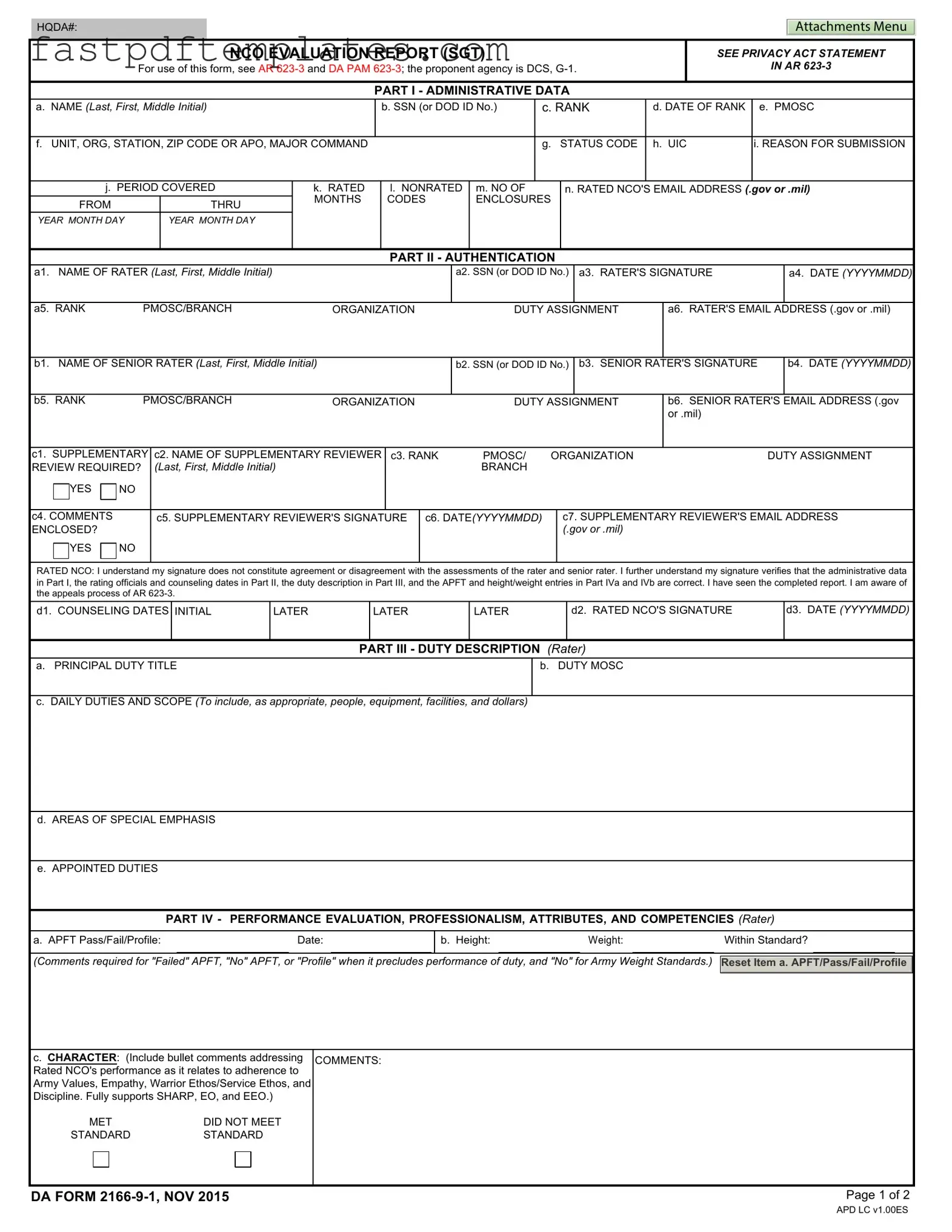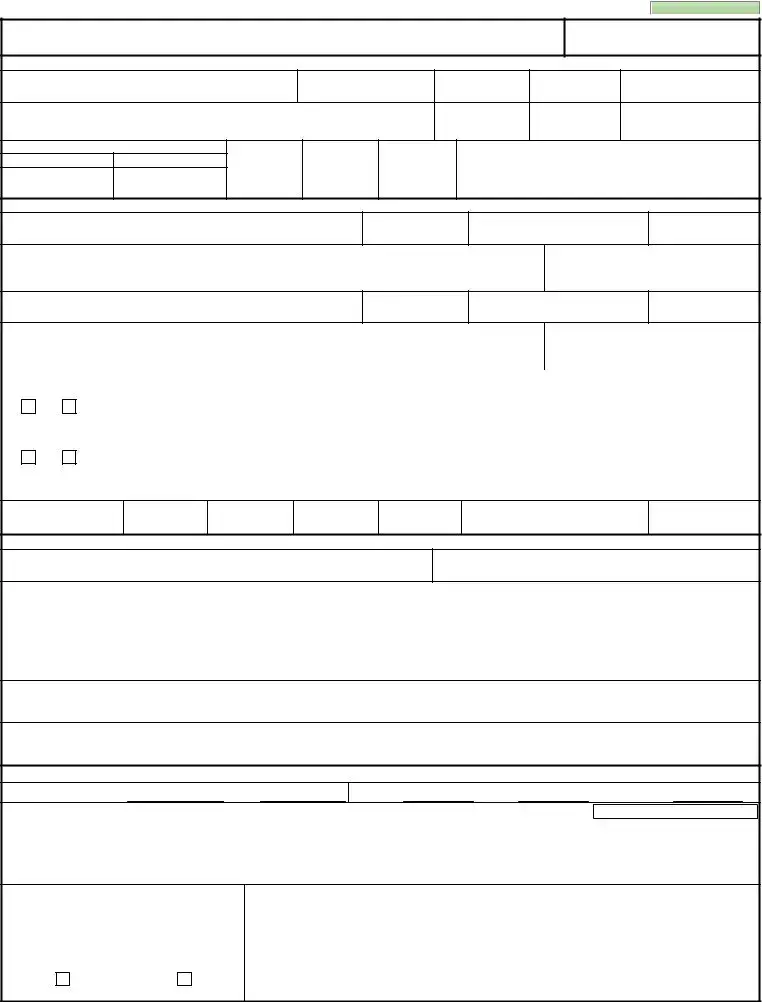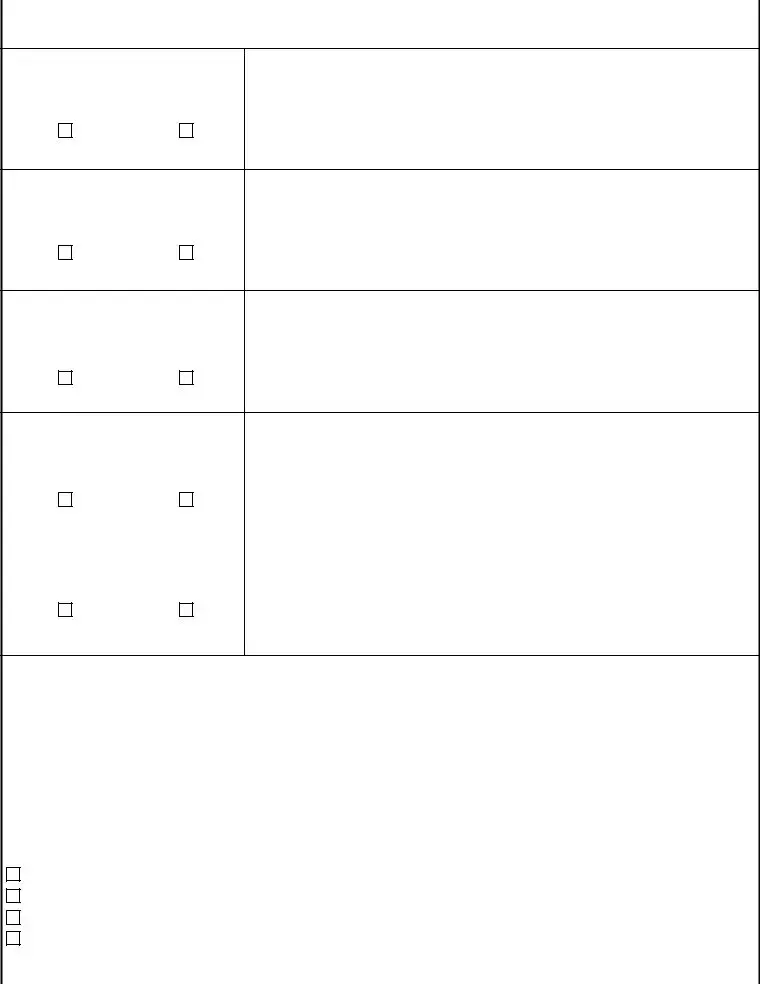The DA Form 2166-9-1 is similar to the DA Form 2166-9, which is an NCO Evaluation Report for higher ranks. Both forms serve the purpose of evaluating the performance of non-commissioned officers. They include sections for administrative data, performance evaluation, and overall potential. The main difference lies in the rank of the rated individual, with the 2166-9 used for NCOs at higher grades, allowing for more detailed assessments of leadership capabilities and potential for future assignments.
Another document that shares similarities is the DA Form 67-9, which is the Officer Evaluation Report. Like the 2166-9-1, the DA Form 67-9 provides a structured format for assessing an individual's performance and potential. Both forms require input from raters and senior raters, and they emphasize the importance of leadership attributes. However, the DA Form 67-9 is specifically designed for officers, reflecting the different roles and responsibilities associated with those ranks.
The DA Form 4856 is also comparable, as it is used for counseling soldiers. Both the 4856 and the 2166-9-1 include sections for documenting performance and setting goals. However, the 4856 focuses more on developmental counseling, while the 2166-9-1 is centered on formal evaluations. Each form contributes to a soldier’s professional development, but they serve distinct purposes within the evaluation process.
Additionally, the DA Form 7500, known as the Noncommissioned Officer Evaluation Report (NCOER) for the Army Reserve, shares structural similarities with the 2166-9-1. Both forms assess the performance of NCOs, but the DA Form 7500 is specifically tailored for Army Reserve members. The evaluation criteria are aligned with the same Army values and standards, ensuring consistency across evaluations, regardless of the soldier's component.
The DA Form 2166-8 is another relevant document, as it serves as the NCO Evaluation Report for soldiers in the Army National Guard. Similar to the 2166-9-1, it includes sections for performance evaluation and overall potential. However, the 2166-8 is designed to meet the specific needs and regulations of the National Guard, while still maintaining a focus on leadership and professional development.
The DA Form 1256, which is the Incentive Award Nomination Form, also has some similarities to the 2166-9-1. Both forms require detailed descriptions of an individual's contributions and achievements. While the 1256 is focused on recognizing exceptional performance through awards, the 2166-9-1 is aimed at evaluating overall performance and potential for future roles. Both documents play a role in acknowledging and promoting excellence within the Army.
Another comparable document is the DA Form 703, which is the Army Physical Fitness Test Scorecard. While the primary focus of the 703 is on physical fitness, it is often included as part of the evaluation process in the 2166-9-1. Both forms emphasize the importance of physical readiness and its impact on overall performance. The integration of fitness assessments into the evaluation process underscores the Army's commitment to maintaining a physically capable force.
Lastly, the DA Form 67-10-1 is relevant, as it is used for evaluating company-grade officers. Similar to the 2166-9-1, it includes sections for performance evaluation and potential assessment. Both forms require input from raters and senior raters, ensuring that evaluations are comprehensive and reflect the individual's contributions. The main distinction is the rank of the individuals being evaluated, with the 67-10-1 focusing on company-grade officers and the 2166-9-1 on NCOs.


